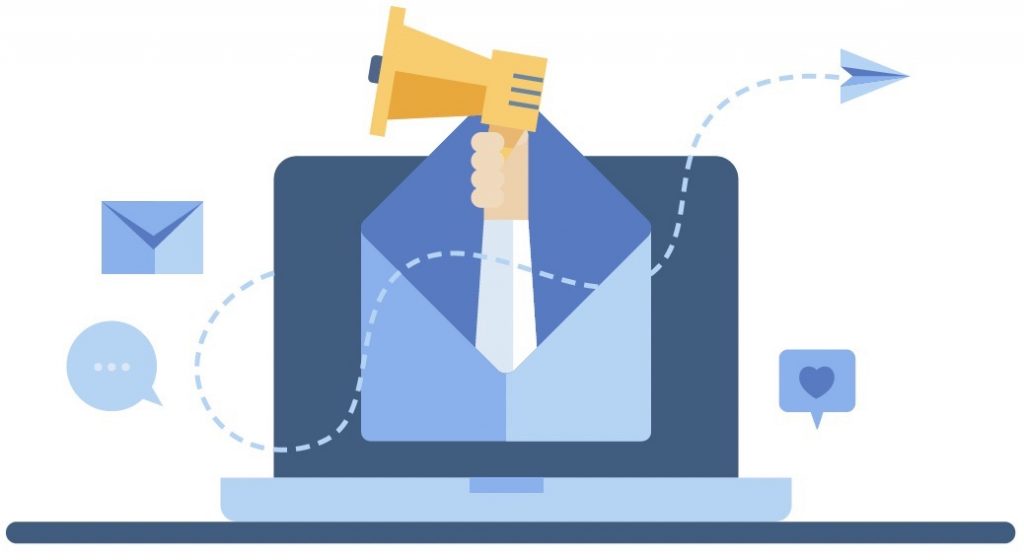It’s a necessary component of modern business that many people profess to despise. Others question its effectiveness as a sales tool – much less for building relationships with people.
Like it or not, email can be a powerful tool for building (or losing) credibility in business.
Here are five tips for building sales credibility with email.
1. The most important part of an email is not the subject line
While it’s true that good subject lines are critical (see tip #3), the subject line isn’t what people typically read first. The FROM line is the focus as people scan their inbox and decide what to open.
Let’s say you open your inbox in the morning and scan your emails. You’ve got a bunch of emails but your boss’s name pops out at you. Suddenly those other emails aren’t so important no matter how clever their subject lines are.
While you can’t compete with someone’s boss, there are steps we can take to enhance our credibility in the FROM line. Mainly, use your full name and a company email address, not a personal email like Gmail.

2. Make it personal and show them you know them
Again, before we get to subject lines, know who you are emailing. Too many salespeople get excited about having lists of contacts that they can fire a bunch of emails at.
But remember: Spam = credibility killer.
Your competition may be relying too heavily on email templates that they send out to everyone. Separate yourself from every other salesperson by making your sales emails to top prospects personal, not just personalized.
Of course, you should only be emailing people who are relevant to your business, solutions and products. But you should also segment your contacts – by position or job title, by seniority, by generation (e.g. Gen Z, millennials, Gen X, boomers), and by business challenge. And tailor your message directly to that person and their personality. Your signature section is also critical territory. Including a professional headshot photo can build credibility by showing that you’re a real respectable person instead of a random nobody they should avoid.

3. Subject lines – don’t try to be too clever
Ok, let’s talk subject lines. There is no shortage of blogs and articles on the internet that will advise you to craft a clever, attention-grabbing subject to hook the recipient into opening the email and reading on.
Good advice – the problem is that some emailers try to get too clever by:
- Being cryptic: “You’ll never guess why I’m emailing you”
- Adopting an informal or too familiar tone: “Hey there” or “How have you been?”
- Using clickbait: “Re: project updates” or “You won’t believe this”
The jury is still out on whether including emojis in a subject line is a good idea. If you’re emailing someone who is Gen Z or if it’s product-appropriate, it might work, but some recipients might view it as unprofessional or even as spam and avoid opening your email.
Suffice it to say, again, think of your audience. You should know who you’re emailing, and you’ll gain credibility when your subject line communicates that you can help them in a way that they need.
4. No joking around
Some sales pros can’t help trying to inject humor into their emails. Humor can work, but primarily with people you already know and who know you.
The problem is that email cannot convey tone or intent like you can in person, so humor can backfire. The recipient may not find your attempt funny or they may even be offended.
Also avoid jargon and buzzwords, as these can come across as insincere
or confusing. Technical terms and abbreviations may be appropriate if you’re communicating with peers in your industry, but may confuse a broader audience. Buzzwords like “synergy” or “seamless” and tired clichés like “at the end of the day” can cause people’s eyes to roll.
Know that hyperbole like “the answer to all your problems” often backfires, as people are skeptical about fanciful claims. Exaggeration immediately diminishes your credibility.
5. Most Importantly, Provide Value
You’re selling to busy decision-makers with less time than money, so get to the point! Eliminate wind-up phrases like “I hope this email finds you well” or “Just following up.”
In the subject line, in your first sentence and in your call-to-action, make it clear that you understand the challenges the recipient faces and/or the need they have.
Speak directly to the recipient, making it more about them than about you. And make every effort to provide value by helping them with useful content and solutions to their problems.
If your email includes links or attachments, always double-check to make sure links go to the right pages and attachments are actually attached. Keep in mind that too many links can land you in the recipient’s junk folder – meaning your email will never be seen, much less read.
Lastly, know when not to send an email. If you find yourself writing a long email scrap it and pick up the phone or schedule a video chat. If you must convey bad news, express empathy, or discuss a complex topic, use your voice instead. This reduces the chances of misunderstanding – and demonstrating you truly care about them can be the greatest value of all.
By using these approaches, your sales email will boost your credibility with your customers instead of diminishing it.

